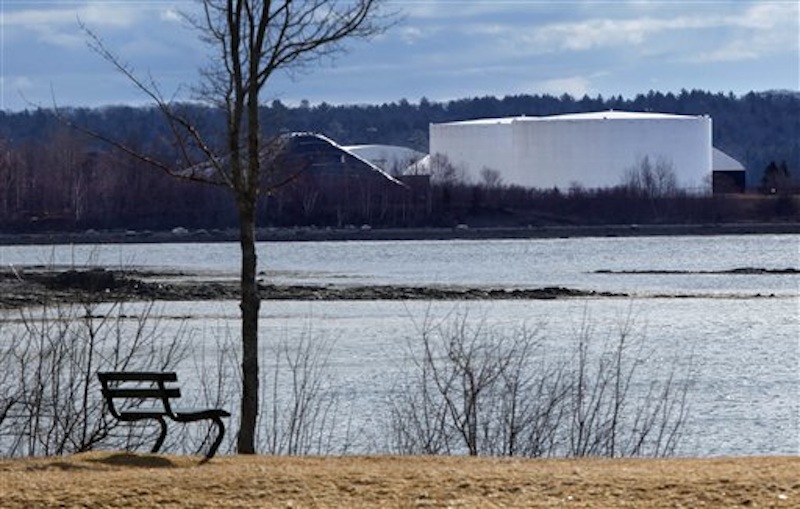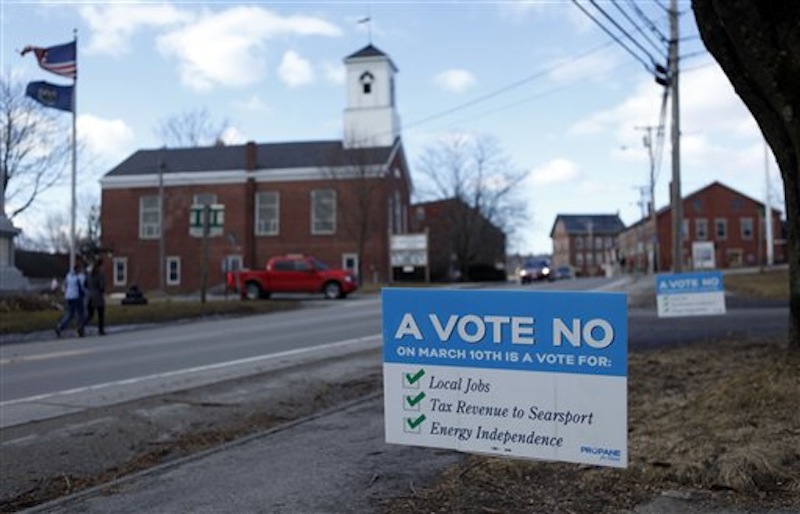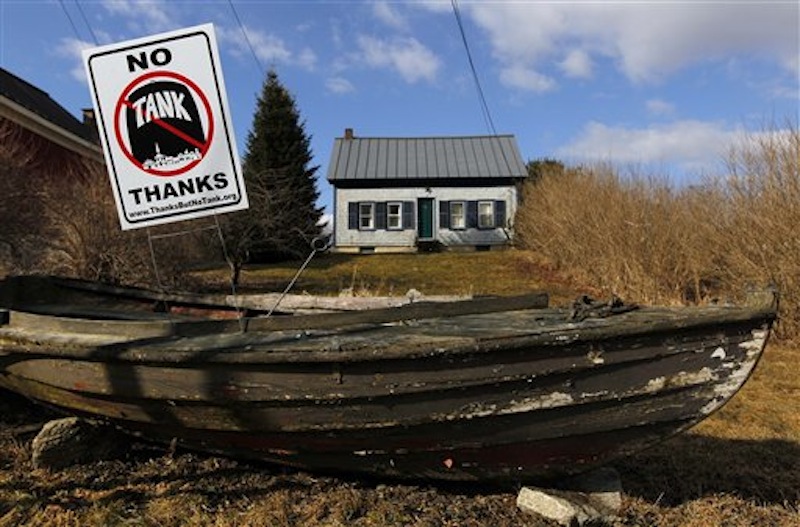PORTLAND — Energy officials have long wanted to decrease reliance on heating oil in Maine, but efforts to bring other fuel sources into the state have not always been met with open arms.
Mainers have resisted past efforts to increase the flow of natural gas through large liquefied natural gas terminals along the coast.
But on Saturday, residents in the coastal town of Searsport voted 297 to 165 against a proposed moratorium that would have slowed or possibly derailed a proposal to build a 14-story-high storage tank for propane brought to Maine by tankers. In a straw poll eight years ago, townspeople voted against the idea of an LNG terminal.
With the moratorium now defeated, Denver-based DCP Midstream will move forward with plans to erect the 22.7 million-gallon tank.
“It’s a pretty convincing statement by the local residents that they want to pursue development,” DCP Midstream spokeswoman Roz Elliott said.
The state did not take a position on the propane tank proposal in Searsport because it was viewed as a local issue, said Office of Energy Independence and Security Director Kenneth Fletcher.
But generally speaking, increasing propane storage capacity would help stabilize and diversify Maine’s energy supply, he said. Propane is brought to Maine by truck and railroad from out of state.
“We want to make sure people have options, and propane is one of those options,” Fletcher said. “And we need to make sure there is sufficient supply so people can have access to it in a reliable manner.”
DCP Midstream plans to build the tank at an existing marine terminal that is already home to more than 30 much smaller tanks, which hold heating oil, gasoline, diesel fuel and other products.
In the months leading up to Saturday’s vote, supporters said the propane tank would bring jobs, add to the local tax base and provide a stable supply of propane for Maine homes and businesses. But critics said the project is too big, will create more truck traffic and hurt the region’s tourism-based economy, while raising environmental, safety and pollution concerns.
DCP Midstream is a private joint venture owned equally by ConocoPhillips and Spectra Energy. It already has received approval from the Department of Environmental Protection but still needs the OK from the Army Corps of Engineers.
The project will result in more than 100 jobs during construction and an additional 12 to 15 permanent jobs once it’s completed that will pay roughly $40,000 to $56,000 a year plus benefits, the company said.
It’s the promise of jobs that appeals to A.J. Koch Jr., 29, a lifelong resident who is between jobs. Tourism-based businesses are only seasonal and aren’t high-paying, he said.
“We need something,” he said. “I think we have one of the best natural resources we could ask for with the harbor. If we don’t do something, then we’re just wasting it.”
Searsport residents have a long history of resisting development. For decades, they opposed efforts to develop the state-owned Sears Island. The poll eight years ago put Searsport among several Maine towns where residents opposed proposals for LNG terminals.
This time, a vocal opposition group known as Thanks But No Tank took root.
The tank is simply too big for the small town, which has about 2,800 residents, said Astrig Tanguay, who owns the Searsport Shores Ocean Campground with her husband and is a member of the opposition group. It will be visible from miles away, she said, and will threaten tourism.
She’s also concerned about pollution from increased truck and ship traffic, lighting that could diminish the dark night sky and the potential for fires and explosions. The local roads will take a beating with so many heavy trucks and the air could smell like rotten eggs when the wind’s blowing a certain way, she said.
About 50 propane trucks a day would come and go from the terminal in winter and 15 to 17 in the warm-weather months, Elliott said.
Right now, Tanguay said, the town and the region now have a nice balance of retail, industrial and tourism jobs.
“If we shift to heavy industrialization, all of that will go down,” she said.
With the moratorium rejected, the company hopes to begin construction later this year. Construction is expected to take about 18 months.
The tank proposal has its roots in a propane shortage in 2007. Maine depends on rail shipments for a majority of its propane, and supplies tightened during a rail strike in Canada. Then, bad weather delayed two propane ships bound for other terminals in New England.
The shortage underscored Maine’s need for its own propane storage capabilities, said David Cole, who was the state’s transportation commissioner during the shortage and now operates a transportation consulting business.
“Propane is part of the energy mix of the state,” Cole said. “And in my mind it makes sense to have storage capacity here so in the future we’re not dependent on storage from away.”
Send questions/comments to the editors.





Success. Please wait for the page to reload. If the page does not reload within 5 seconds, please refresh the page.
Enter your email and password to access comments.
Hi, to comment on stories you must . This profile is in addition to your subscription and website login.
Already have a commenting profile? .
Invalid username/password.
Please check your email to confirm and complete your registration.
Only subscribers are eligible to post comments. Please subscribe or login first for digital access. Here’s why.
Use the form below to reset your password. When you've submitted your account email, we will send an email with a reset code.